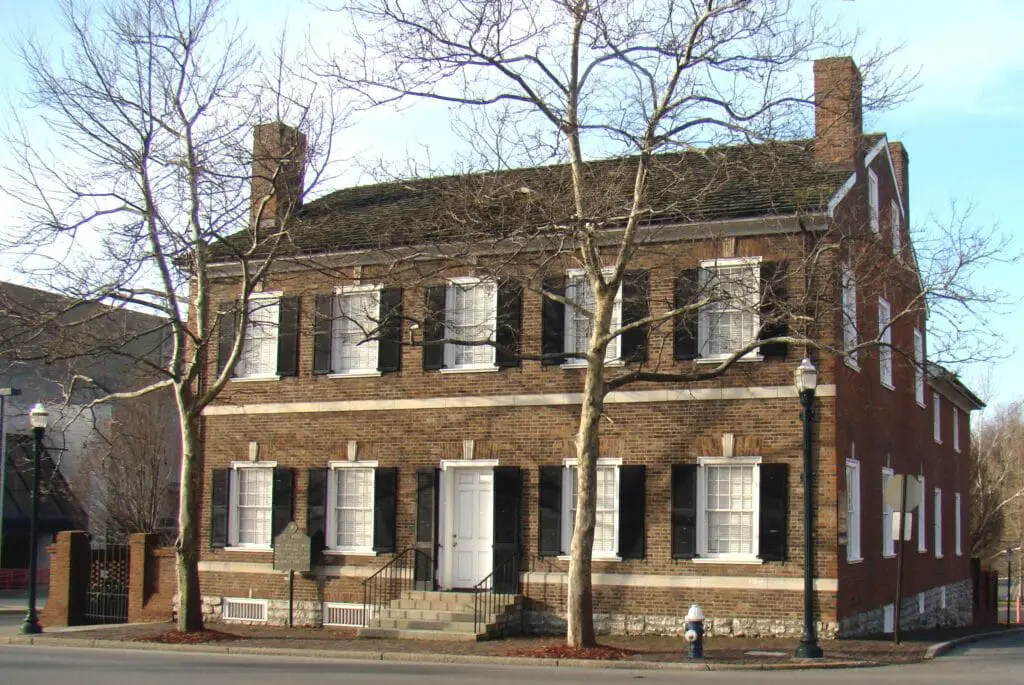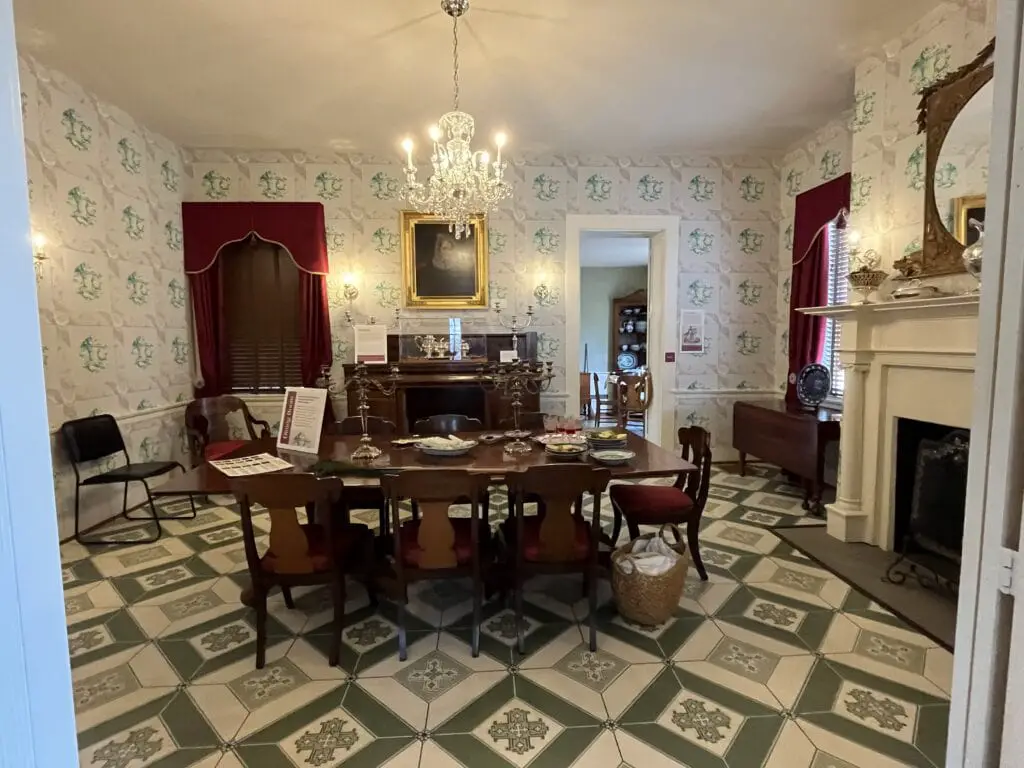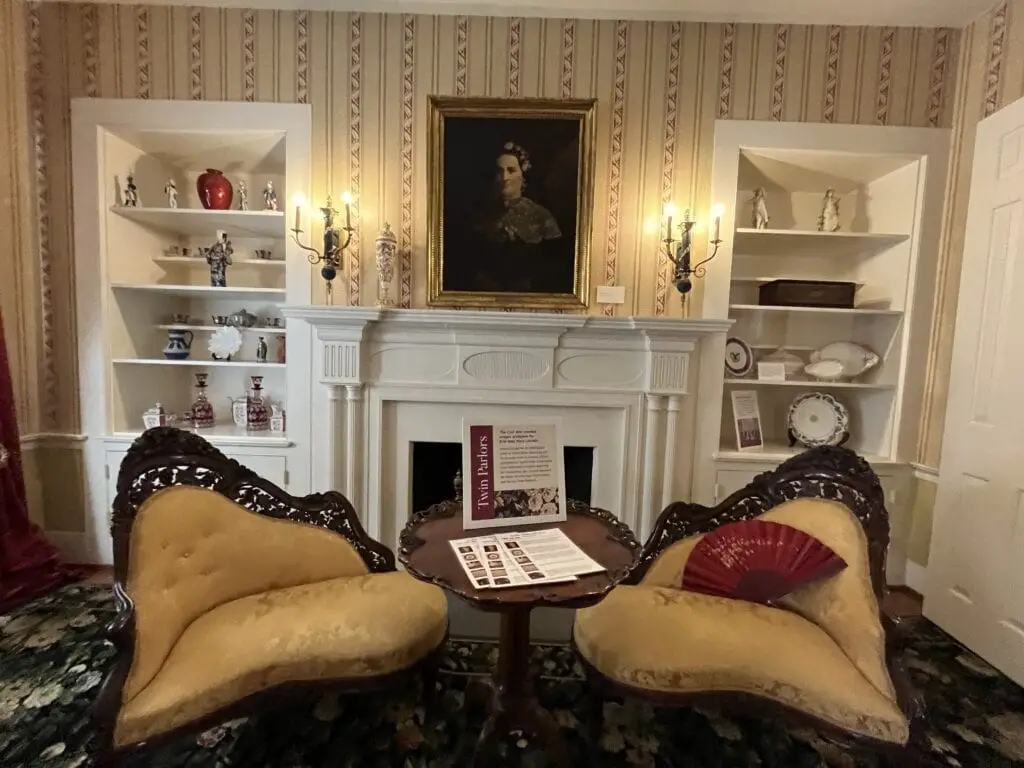The Historical Gem of Lexington
Nestled in the heart of downtown Lexington, Kentucky, the Mary Todd Lincoln House is a testament to American history and the intriguing life of one of its most talked-about First Ladies.
This Georgian-style residence, built between 1803 and 1806, originally served the bustling city as “The Sign of the Green Tree” inn and tavern. Its transformation into a prestigious family home began when Robert Smith Todd, Mary’s father, purchased the property in 1832.
The house’s journey from a public inn to a private residence marks a significant chapter in Lexington’s architectural evolution. As I delve into its history, I find the blend of public and private life fascinating.
The Todd family, known for their wealth and social standing, brought a sense of refinement and culture to the burgeoning city. Mary Todd, born into this affluence, spent her formative years within these walls, a fact that adds layers of depth to the home’s story.
In 1971, the Mary Todd Lincoln House claimed its rightful place on the U.S. National Register of Historic Places, underscoring its importance in the tapestry of American heritage. The designation marked a pivotal moment for Lexington’s historical landscape, spotlighting its rich past and connection to national history.
As a hub for things to do in Lexington, Kentucky, the house invites visitors to step back in time and explore the life and times of Mary Todd and her famous husband, Abraham Lincoln.
The transformation from a bustling inn to a revered historical site reflects the changing dynamics of Lexington itself.
The city, known for its horse farms and bourbon distilleries, also prides itself on preserving its historical sites, with the Mary Todd Lincoln House as a prime example.
The preservation efforts speak volumes about the community’s commitment to honoring its past while navigating the demands of modern tourism and education.
As I ponder the significance of the Mary Todd Lincoln House, I can’t help but appreciate the layers of history that converge here.
From its early days as a gathering spot for travelers to its current status as a museum, the house embodies the spirit of Lexington’s past, present, and future.
It serves as a bridge between eras, offering a unique glimpse into the life of a woman who witnessed the nation’s most tumultuous times from an intimate perspective.
A Peek into Mary Todd’s Early Life
Mary Todd’s childhood was anything but ordinary in the early 1800s. Born into the affluent Todd family in 1818, she experienced the privileges and pressures of high society.
The Todd household was bustling, influential, and deeply intertwined with Lexington’s social elite. I believe this environment shaped Mary into the complex figure she later became.
Education played a crucial role in Mary’s upbringing. Unlike many women, she received a formal education, attending Shelby Female Academy.

This was a significant opportunity, reflecting her family’s status and progressive views on female education. It’s fascinating to think about how this education might have influenced her views and her future role in the White House.
Mary’s move to Springfield, Illinois, in 1839 marked a new chapter in her life. This move was a significant shift from her life in Lexington, introducing her to new social circles and, eventually, to Abraham Lincoln.
Their meeting and subsequent marriage in 1842 were pivotal moments, not just for them but for the nation’s history. It’s intriguing to consider how her Lexington upbringing influenced her later life and politics.
From Home to Historic Museum
The transformation of the Mary Todd Lincoln House into a museum is a story of community effort and historic preservation.
In the mid-1970s, Beula C. Nunn, the wife of Kentucky Governor Louie B. Nunn, spearheaded the campaign to save the house.
Her leadership, along with the support of the Kentucky Mansions Preservation Foundation, Inc., turned the once-private residence into a public museum.
The house opened its doors to the public on June 9, 1977. This event was not just a local milestone; it marked the first time a historic site was dedicated to a First Lady.
The museum’s opening was a testament to Mary Todd Lincoln’s enduring legacy and the community’s commitment to preserving history.
The museum today offers a deep dive into the life and times of Mary Todd Lincoln. It stands as a testament to the power of preservation and education.
The efforts of individuals and organizations to maintain this site underscore the importance of remembering our collective past. It’s a reminder of how history can bring a community together, fostering a shared sense of identity and pride.

Inside the Mary Todd Lincoln House
Visitors walk through the Mary Todd Lincoln House and get a unique glimpse into 19th-century life.
The museum showcases a collection of period furniture, portraits, and artifacts that belonged to the Todd and Lincoln families. Each room tells a different story, from Mary’s upbringing to her tumultuous years in the White House.
The parlor, with its elegant furnishings, sets the scene for social gatherings of the era. I imagine the conversations and debates in this room shaping the social and political landscape of the time.
The dining room, set with china and silver, offers a peek into the family’s daily life and their social status in Lexington society.
The museum doesn’t just display items; it tells stories. For example, the Beula C. Nunn Garden is a living exhibit reflecting the types of plants and herbs that would have been found in the Todd family’s garden.
This connection to the past, grounded in the tangible and the growing, adds depth to the historical narrative presented within the house’s walls.
Unusual History and Controversy
The Mary Todd Lincoln House has its share of unexpected stories, adding layers to its historical significance. One of the most intriguing involves Belle Brezing, a figure who later became a madam in Lexington.
Her connection to the house, starting in 1879, ties the building to the city’s less talked-about history. This aspect challenges visitors to consider the complex social dynamics of the time.
The controversies surrounding Mary Todd Lincoln herself, including her family’s slave-holding background and her later years of personal turmoil, are part of the narrative.

The museum addresses these issues head-on, providing a more nuanced view of her life and the era. It reminds us that history is multifaceted and filled with conflicting perspectives and experiences.
The museum’s approach to these sensitive topics is commendable. Presenting a balanced view encourages visitors to think critically about the past.
This, in my opinion, is what makes the Mary Todd Lincoln House not just a museum but a place of learning and reflection.
Engaging with the Community and Visitors
The Mary Todd Lincoln House goes beyond being a mere museum; it’s a vibrant center for education and community engagement. The museum organizes various programs and events that bring history to life.
The “Lincoln’s Lexington” downtown walking tour is a prime example. It offers a unique perspective on the city’s history through the eyes of the Lincoln family.
Educational programs, especially those designed for children, play a significant role in the museum’s outreach.
For instance, the Kid’s At-Home Activity Packet allows young minds to explore history interactively, blending learning with fun.
These initiatives not only educate but also foster a deeper connection between the museum and the community.
The museum’s efforts to engage with a broader audience, including virtual programs and online resources, ensure that Mary Todd Lincoln’s story reaches beyond those who can visit in person.
This approach to community engagement reflects a commitment to accessibility and inclusivity, making history available to all.

The Legacy and Future of the Mary Todd Lincoln House
The Mary Todd Lincoln House is a beacon of historical preservation and education in Lexington. Its impact on the community and visitors underscores the importance of maintaining such sites. The museum honors Mary Todd Lincoln’s legacy and reminds us of our shared past.
The challenges of preserving historical sites like this are ongoing, requiring support from both the community and visitors. Much like its past, the museum’s future will likely be shaped by the dedication of those who value history and education.
As someone who appreciates the stories and lessons from the past, I see the continued relevance and necessity of places like the Mary Todd Lincoln House.
The museum’s role in Lexington’s cultural and educational landscape is undeniable. It offers a window into the past, providing insights and reflections that remain relevant today.
The legacy of the Mary Todd Lincoln House, with its rich history and commitment to education, is a testament to the enduring power of preserving our collective history.
